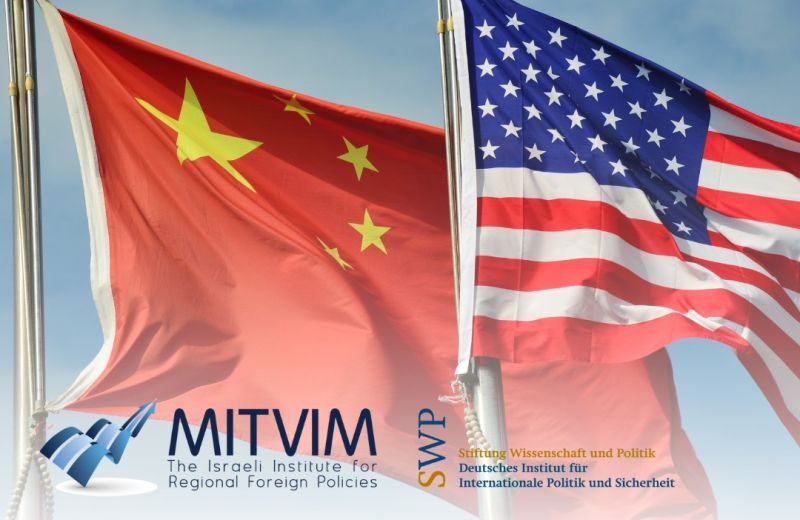 / All Events
/ All Events
The Mitvim Institute recently convened a high-level expert roundtable, held via Zoom, to explore the evolving dynamics of U.S.-China relations and their profound implications for the Middle East. As competition between the two global powers intensifies, the region finds itself increasingly entangled in their strategic calculus, posing urgent questions about Iran, the Gulf, and Israel’s positioning in the decades to come.
Major questions:
1. What strategic direction is Iran pursuing in terms of its nuclear ambitions and positioning between the U.S. and China?
2. What role does the ME play in Trump’s China policy?
3. How will the Gulf states position themselves as the conflict develops?
4. Will Israel be caught in the middle of a war between two superpowers? How can Israel better position itself, considering its relative pressures (security)? Can it hedge its position?
5. Can Israel repair its relationship with China?
6. Can Israel force its way into the future of the Middle East?
Main insights:
● The Middle East has become an open arena for U.S.-China strategic competition, with regional actors engaging in careful hedging rather than choosing clear sides. Rather than a binary split between pro-American and pro-Chinese camps, most countries are navigating a complex middle ground. The notable exception is Israel, which remains closely aligned with Trump and is currently experiencing a historic low point in its relations with China.
Iran:
● Iran is much more dependent on China economically, particularly as a key importer of its oil. However, Iran’s efforts to improve relations with the West are also aimed at diversifying its options and improving the terms of its deals with China, which currently receives Iranian oil at a significant discount.
The Gulf:
● The China-U.S. conflict is not central to Saudi Arabia’s strategic thinking. Trump’s recent visit to the Middle East and the large-scale deals signed with Gulf states should not be interpreted as a Gulf decision to side with the U.S. but as part of the broader hedging strategy. In this context, continued hedging is reflected in the decision not to move forward, for now, with a U.S.-Saudi security pact. Saudi involvement in BRICS reinforces this notion.
● Saudi hedging vis-à-vis Iran also continues. The Saudis have adopted a more conciliatory tone and are beginning to come to terms with Iran’s status as a nuclear threshold state.
● Trump’s second-term Middle East policy is primarily guided by transactional considerations, perceived by many countries in the region as short-term. The U.S. is perceived as less reliable and not as interested in building long-term partnerships. Unlike Trump’s first term, during which advisers shaped policy, the current term is driven by Trump’s interests.
Israel:
● Israel is not seen as a central player in Trump’s broader financial vision to connect India with Europe and the Mediterranean via the Arab Gulf. One possibility is that his Digital Silk Road initiative aims to position the Gulf as a hub for AI and microchips, connecting it westward via Turkey and Syria.
● Israel is currently playing a losing hand. Its continued war on Gaza and actions in the West Bank have rendered normalization irrelevant in the short term and are severely damaging its future regional ties. The government’s long-standing decision to hitch its wagon to Trump makes hedging far more difficult and increases its vulnerability to Trump’s regional moves.
● As the “special relationship” between Israel and the U.S. loses its exclusivity, Israel is perceived as less attractive:
○ Gulf countries no longer need Israel as a go-between for Washington.
○ Similarly, China sees less value in Israel now that it is no longer the U.S.’s most prominent regional partner.
○ Israel also risks losing its added value as a regional tech leader if Trump’s plan to develop the Gulf into a central innovation hub succeeds.
China:
● There are no signs that China aspires to replace the U.S. as the dominant power in the region, despite growing perceptions of U.S. withdrawal. Instead, China appears focused on seizing opportunities as they arise—something Trump’s policy readily provides. All China needs to do is take advantage.
○ One clear example is the U.S. withdrawal of USAID, which allows China to expand its soft power at America’s expense.
● At the same time, China has a vested interest in the U.S. maintaining a certain level of involvement in the region, so that Washington does not reallocate its resources to the Indo-Pacific.
● The key test for China’s credibility as a policy alternative is its ability to act as a mediator. However, earlier steps to get involved in Israeli-Palestinian mediation are now complicated by China’s increasingly harsh stance toward Israel.
● It remains to be seen what will ultimately drive China’s Middle East strategy: technological superiority or regional security, and how it will respond to Trump’s digital “Silk Road” initiative.


